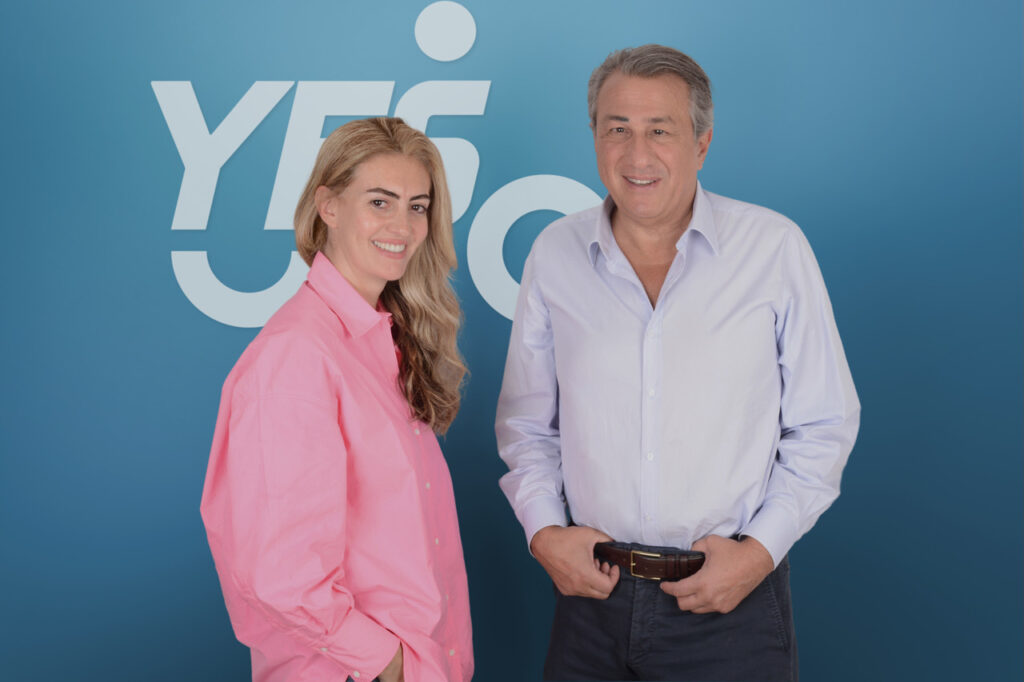
Instant delivery has taken a downward turn lately. Having burned through hundreds of millions of dollars and rapidly expanded across the globe, quick commerce companies like Gorillas or Getir are now having to lay off staff and contemplate a considerable scale back.
For Yasmine Abdel Karim and Khashayar Mahdavi, co-founders of the instant delivery company Yalla Fel Sekka (YFS) – which became gross margin positive just 12 months after launch – instant delivery has lost focus on its most crucial element: delivery.
YFS was launched in March 2020, and Yasmine and Khashayar envisioned a customer-centric world, where all delivery was oriented around customers’ expectations. Then the pandemic locked the world down, and demand for delivery boomed, with more people wanting more items to arrive in shorter time frames.
“It wasn’t only the instant delivery concept that shifted”, says Yasmine. “Delivery companies wanted to go to the customer front, the B2C model. But no one was looking at how to empower businesses, their infrastructure and their network to reach the customers.”
From the start, YFS worked with a wide variety of businesses, including supermarkets, to manage the last-mile delivery of goods and products. Their experience so far gives them a broad understanding of the intricate logistical process involved in instant delivery and the subworld of quick commerce. Key to their success is optimization. But that can only be understood in their use of shared resources, and a business model anchored in understanding consumer habits, productivity and unit economics.
Yasmine and Khashayar sat down with 150sec and shared how the industry has changed and is changing, how YFS has responded, and how other instant delivery companies can follow suit.
You believe that the future of last-mile delivery will be defined by better use of shared resources. Could you elaborate?
Khashayar: Before, we lived in a merchant-centric world: and as long as people got their orders and paid for them, merchants didn’t really care about the delivery process. Today, because customers have so many choices, we’ve moved toward a customer-centric space, where people expect their deliveries to arrive quickly.
In this new sphere, nobody factored in the cost elements. Because obviously, the consumer who buys goods and pays for them online assumes that the delivery cost is included. For the merchant, though, meeting this expectation means costs coming out of their pocket and therefore cutting profit margins.
Merchants, therefore, have to operate in a more lean way. They have to bring down costs elsewhere in order to maintain business efficiency and cater to customers. Better technology plays a role here, as does great ops, but perhaps more importantly, the whole business model around delivery needs to change.
Until now, most last-mile delivery players have been using an asset-heavy model, where they own warehouses and have their own fleet of drivers. This model isn’t ideal for shipping items quickly and keeping costs low – there’s a lot of waste and overspending. At YFS, we strongly believe that a shared resource model is necessary to optimize processes, reduce expenses, and stay relevant in the modern market.

What exactly do you mean by “shared resources”?
Yasmine: It means asset light. So you are able to respond to spikes in demand. It’s like an Uber model. I’m sure you’ve seen other startups that specialize in using other retail shops for pick up and drop-ups. It’s another way of not investing in fixed infrastructure, by using third-party infrastructures, to reduce your costs.
To move last-mile delivery forward, it has to be cost-effective; and for it to be cost-effective, it cannot be purely asset-heavy, where individual players own all the cost. You need to share those resources to ensure that everyone in the chain is satisfied – including both the customer and the merchant.
Could you elaborate on how shared resources and warehouse management works?
Khashayar: When it comes to dark stores or warehouses, you want to be able to share, you don’t necessarily want to own. You want to rent or lease, and when you have your dark store, you want to have it multipurpose.
For example, if you have a dark store, you may want to be able to serve different clients, or you may want to have dark stores that can be used for both groceries and ecommerce. By sharing a dark store, last mile companies improve productivity, which is critical for unit economics. Businesses have to be smarter in organizing and operating, and by exchanging resources, more companies streamline their processes, become more resilient, and accommodate emerging customer preferences.
How could struggling quick commerce companies operate more effectively today?
Khashayar: The issue is the companies’ business models. There was a Faustian pact between Silicon Valley, Wall Street, and Millennials: people were consuming and buying, and startups were growing and getting higher valuations, while subsidizing the products for those millennials. Now what’s happening is these companies cannot raise more money at higher valuations. Players spend a lot of money on acquiring customers, but as soon as interest rates start going up, people stop focusing on revenue growth because they can’t get those higher valuations. That means they instead have to focus on unit economics in their sector.
I think that will lead to a readjustment of the entire business model. But that doesn’t mean that quick commerce is a bad idea.
Quick commerce has taken convenience stores and put them online, which is a great idea. But do you need to deliver it in five minutes or 10 minutes? If you have it delivered within the hour, is that good enough? Yes. As a result, people are seeing how they can optimize their business models, and adjust their ops to make these models profitable.
Has quick commerce been a success in Egypt/the MENA region?
Yasmine: It’s actually very funny because in Egypt and in the MENA region, we always had small supermarkets in each neighborhood. We would pay somebody to bring us the goods we were missing. From a cultural perspective, quick commerce has always been there.
Switching that mentality to an app formula has taken place much faster here than in Europe, for example. That said, quick commerce in Egypt is still just starting, we only have two or three companies in the sector, and they represent a very small percentage of grocery sales. But with everything that’s happening in the world and the subsequent consumption habits, we anticipate exponential growth and consolidation of the industry in Egypt.
What’s YFS’s secret to sustainability and surviving the upcoming downturn?
Yasmine: From day one, we’ve been conscious of unit economics, market conditions, and challenges. We’ve been focusing on healthy growth and a business model that fits our customers and market. By getting to a point where these four elements were working in harmony together, we were able to optimize processes further with advanced technology. This operational excellence empowered us to overcome a lot of the unique challenges that Egypt holds (for example, not having postcodes), and that’s how we were able to be gross margin positive in just a year.
Disclosure: This article mentions a client of an Espacio portfolio company.





